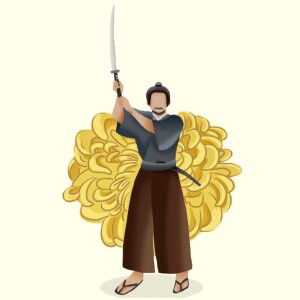
- Podcast Features
-
Monetization
-
Ads Marketplace
Join Ads Marketplace to earn through podcast sponsorships.
-
PodAds
Manage your ads with dynamic ad insertion capability.
-
Apple Podcasts Subscriptions Integration
Monetize with Apple Podcasts Subscriptions via Podbean.
-
Live Streaming
Earn rewards and recurring income from Fan Club membership.
-
Ads Marketplace
- Podbean App
-
Help and Support
-
Help Center
Get the answers and support you need.
-
Podbean Academy
Resources and guides to launch, grow, and monetize podcast.
-
Podbean Blog
Stay updated with the latest podcasting tips and trends.
-
What’s New
Check out our newest and recently released features!
-
Podcasting Smarter
Podcast interviews, best practices, and helpful tips.
-
Help Center
-
Popular Topics
-
How to Start a Podcast
The step-by-step guide to start your own podcast.
-
How to Start a Live Podcast
Create the best live podcast and engage your audience.
-
How to Monetize a Podcast
Tips on making the decision to monetize your podcast.
-
How to Promote Your Podcast
The best ways to get more eyes and ears on your podcast.
-
Podcast Advertising 101
Everything you need to know about podcast advertising.
-
Mobile Podcast Recording Guide
The ultimate guide to recording a podcast on your phone.
-
How to Use Group Recording
Steps to set up and use group recording in the Podbean app.
-
How to Start a Podcast
-
Podcasting
- Podcast Features
-
Monetization
-
Ads Marketplace
Join Ads Marketplace to earn through podcast sponsorships.
-
PodAds
Manage your ads with dynamic ad insertion capability.
-
Apple Podcasts Subscriptions Integration
Monetize with Apple Podcasts Subscriptions via Podbean.
-
Live Streaming
Earn rewards and recurring income from Fan Club membership.
-
Ads Marketplace
- Podbean App
- Advertisers
- Enterprise
- Pricing
-
Resources
-
Help and Support
-
Help Center
Get the answers and support you need.
-
Podbean Academy
Resources and guides to launch, grow, and monetize podcast.
-
Podbean Blog
Stay updated with the latest podcasting tips and trends.
-
What’s New
Check out our newest and recently released features!
-
Podcasting Smarter
Podcast interviews, best practices, and helpful tips.
-
Help Center
-
Popular Topics
-
How to Start a Podcast
The step-by-step guide to start your own podcast.
-
How to Start a Live Podcast
Create the best live podcast and engage your audience.
-
How to Monetize a Podcast
Tips on making the decision to monetize your podcast.
-
How to Promote Your Podcast
The best ways to get more eyes and ears on your podcast.
-
Podcast Advertising 101
Everything you need to know about podcast advertising.
-
Mobile Podcast Recording Guide
The ultimate guide to recording a podcast on your phone.
-
How to Use Group Recording
Steps to set up and use group recording in the Podbean app.
-
How to Start a Podcast
-
Help and Support
- Discover

Uncovering the Soul of Japan: The Fascinating Journey in The Chrysanthemum and the Sword
The Chrysanthemum and the Sword is a book written by anthropologist Ruth Benedict and published in 1946. The book provides an in-depth analysis of Japanese culture and society, focusing primarily on the underlying values, behaviors, and patterns of thought that shape the Japanese people.
Benedict's approach is an ethnographic one, combining her own research with existing literature and interviews conducted with Japanese individuals, both in Japan and in the United States. The book is divided into several chapters, each addressing a different aspect of Japanese culture.
One of the key themes explored in the book is the idea of shame versus guilt. Benedict explains how shame plays a central role in Japanese society, as individuals are concerned with maintaining their social standing and avoiding situations that might bring shame upon themselves or their families. In contrast, guilt, as understood in Western cultures, is less significant in the Japanese context.
Another important concept discussed in the book is the notion of the "group" versus the "individual." Benedict explains that Japanese society places a strong emphasis on collective identity and the well-being of the group, while individual desires and ambitions are often subordinated to the needs of the community. This collectivist mindset is also reflected in Japanese social hierarchies and the importance placed on maintaining harmony and avoiding conflict.
Benedict also delves into the role of religion in Japanese society, particularly the influence of Shinto and Buddhism. She explains how these religious beliefs and practices have shaped the Japanese worldview and influenced various aspects of their culture, including their relationship with nature, their attitudes toward death, and the importance of rituals and ceremonies.
Overall, The Chrysanthemum and the Sword provides a rich and nuanced exploration of Japanese culture, giving readers a deeper understanding of the underlying values and cultural patterns that govern Japanese society. Benedict's analysis offers valuable insights into the ways in which Japanese individuals think, behave, and relate to one another, providing a comprehensive portrait of this complex and unique culture.
Chapter 2:the meaning of The Chrysanthemum And The Sword book"The Chrysanthemum and the Sword" is a book written by Ruth Benedict, published in 1946. It is an anthropological study that focuses on understanding Japanese culture and its underlying values and beliefs, particularly during World War II.
The book explores the unique cultural aspects of Japan, delving into its traditional customs, social structures, historical development, and psychological traits. Ruth Benedict aims to provide an understanding of the Japanese mindset, which was crucial during the post-war era when the United States needed to reconstruct and establish a peaceful relationship with Japan.
The title of the book, "The Chrysanthemum and the Sword," represents two symbols that reflect different aspects of Japanese culture. The chrysanthemum signifies the aesthetic and artistic side of Japanese society, symbolizing beauty, elegance, and gentleness. It represents the traditional and refined aspects of Japanese culture.
On the other hand, the sword represents the more aggressive and militaristic side of Japanese culture. It symbolizes the warrior spirit, discipline, and the readiness for combat. This aspect of Japanese culture was significant during World War II and emphasizes the honor and loyalty associated with Japanese warrior traditions.
Overall, Ruth Benedict's book aims to provide a nuanced understanding of Japan's cultural and psychological foundations to facilitate better communication and cooperation between the United States and Japan. It provides valuable insights into the complexities of Japanese culture and helps dispel stereotypes and misunderstandings.
Chapter 3:The Chrysanthemum And The Sword book chaptersChapter 1: Introduction
In the introduction, Benedict explains her motivations for writing the book and provides an overview of her research methods. She expresses her belief that understanding the psychology and culture of Japan is crucial for interpreting their behavior during the war.
Chapter 2: Basic Personality of the Japanese
This chapter delves into the fundamental personality traits that Benedict believes are prevalent in the Japanese population. She argues that the Japanese are highly collective, valuing group harmony and fitting in with societal norms. She also discusses their tendency to emphasize social roles, hierarchy, and the importance of duty and honor.
Chapter 3: The Japanese Art of Fighting
In this chapter, Benedict explores the historical and cultural roots of the Japanese warrior tradition and its influence on Japanese military behavior. She examines the importance of the samurai code of conduct (bushido) and its connection to concepts such as loyalty, self-sacrifice, and honor.
Chapter 4: Behind the Mask
Benedict explores the concept of "saving face" or maintaining social dignity in Japanese culture in this chapter. She discusses the importance of proper social etiquette and the pressures faced by individuals in maintaining a harmonious public image.
Chapter 5: Shame and the "Disgrace of the West"
This chapter examines the concept of shame in Japanese society and its impact on behavior. Benedict argues that shame is a potent motivator for the Japanese, leading to a strong desire to avoid embarrassment or disgrace. She compares the Western concept of guilt to the Japanese concept of shame.
Chapter 6: Guilt and Responsibility
In this chapter, Benedict discusses concepts of guilt and responsibility in Japanese culture. She explores differences between individualistic societies (such as the West) and collective societies (such as Japan), focusing on the unique Japanese understanding of guilt and responsibility within the group.
Chapter 7: The Group and the United States
Benedict contrasts Japanese collectivism with American individualism in this chapter. She discusses the implications of these cultural differences for war and diplomacy, highlighting the challenges faced by both nations in understanding each other and finding common ground.
Chapter 8: The Japanese at War
In this chapter, Benedict analyzes the behavior of the Japanese military during World War II. She examines their tactics, strategies, and motivations, arguing that their approach to warfare was heavily influenced by their cultural beliefs and values.
Chapter 9: The Recovery of Independence
The final chapter explores the post-war period in Japan, with an emphasis on the country's ability to rebuild and recover. Benedict reflects on the resilience of the Japanese people and their capacity for adapting to change.
Overall, "The Chrysanthemum and the Sword" offers a detailed and nuanced understanding of Japanese culture and its impact on wartime behavior. Benedict's analysis sheds light on the complexities of cross-cultural interactions and highlights the importance of cultural context in interpreting human behavior.
Chapter 4: Quotes of The Chrysanthemum And The Sword book- "The key to understanding the culture of Japan lies in its emphasis on harmony and duty."
- "The Japanese value the collective over the individual, and see their role in society as integral to the greater whole."
- "In Japanese culture, there is a deep respect for hierarchy and authority, with an emphasis on loyalty and obedience."
- "The idea of 'face' is crucial in Japanese society, as maintaining one's social reputation is considered of utmost importance."
- "The concept of 'shame' plays a significant role in Japanese culture, as individuals strive to avoid bringing dishonor upon themselves or their families."
- "The Japanese believe in the importance of indirect communication, often relying on non-verbal cues and subtle gestures to convey their intentions."
- "Traditional Japanese aesthetics, such as the appreciation for simplicity and nature, are deeply ingrained in their cultural values."
- "The samurai code of honor, known as bushido, emphasizes virtues such as courage, loyalty, and self-discipline, which still resonate in modern Japanese society."
- "Japanese society places a strong emphasis on group cohesion and consensus, valuing harmony and cooperation over individual ambition."
- "The Chrysanthemum and the Sword serves as a study of Japanese culture, shedding light on their unique values, practices, and mindset."
More Episodes
 2025-01-14
2025-01-14
 54
54
 2025-01-08
2025-01-08
 26
26
 2025-01-02
2025-01-02
 135
135
 2025-01-01
2025-01-01
 14
14
 2025-01-01
2025-01-01
 16
16
 2024-12-30
2024-12-30
 22
22
 2024-12-30
2024-12-30
 10
10
 2024-12-30
2024-12-30
 8
8
 2024-12-26
2024-12-26
 21
21
 2024-12-26
2024-12-26
 22
22
 2024-12-25
2024-12-25
 17
17
 2024-12-24
2024-12-24
 12
12
 2024-12-23
2024-12-23
 34
34
 2024-12-23
2024-12-23
 29
29
Create your
podcast in
minutes
- Full-featured podcast site
- Unlimited storage and bandwidth
- Comprehensive podcast stats
- Distribute to Apple Podcasts, Spotify, and more
- Make money with your podcast
It is Free
- Privacy Policy
- Cookie Policy
- Terms of Use
- Consent Preferences
- Copyright © 2015-2025 Podbean.com




